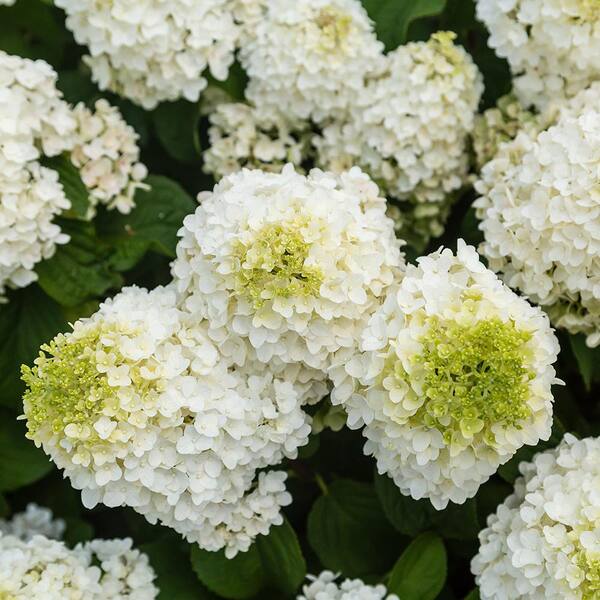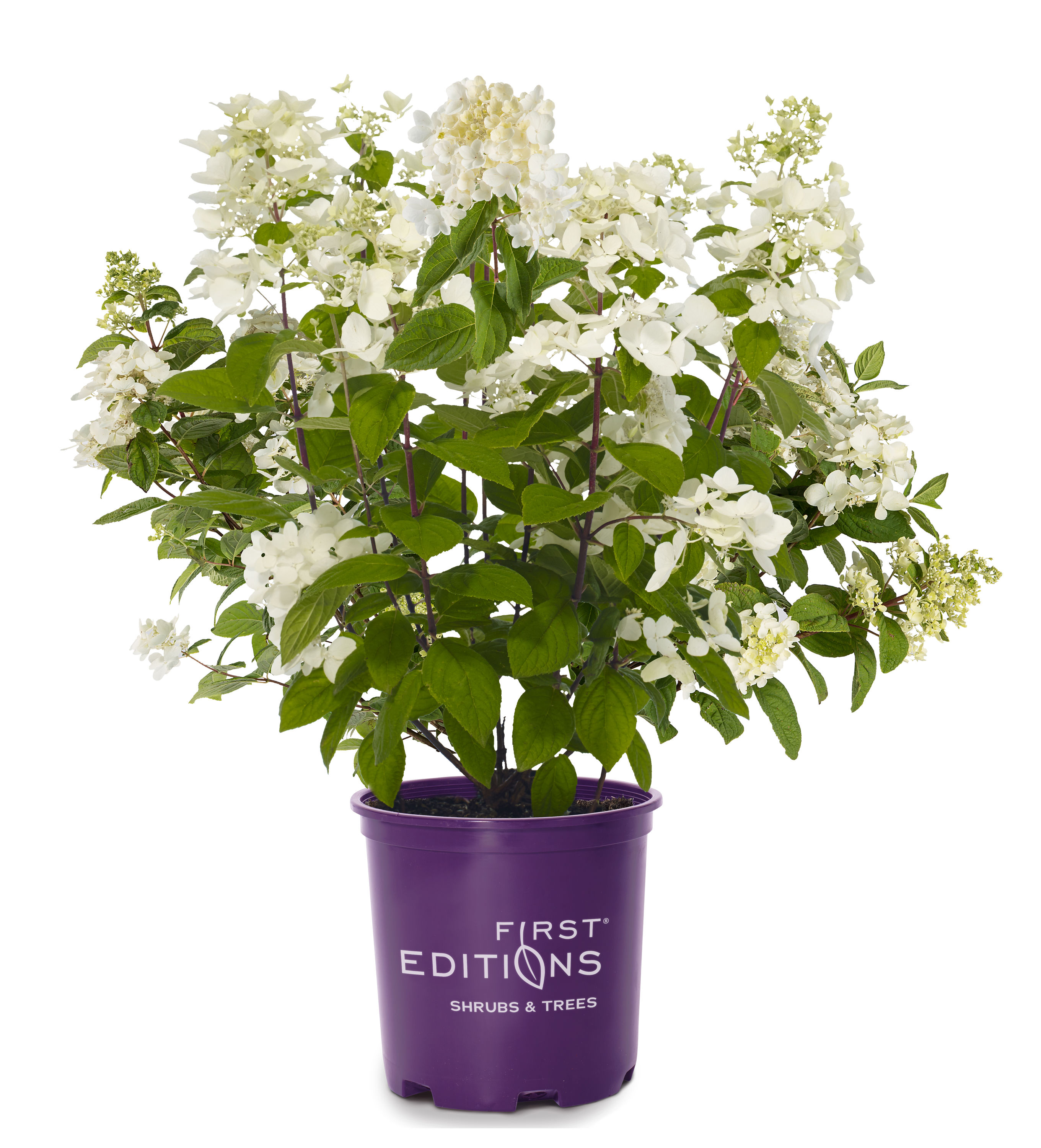Hydrangea Little Hottie: The Ultimate Guide To Growing This Stunning Shrub
Hydrangea Little Hottie is a stunning shrub that is known for its large, mophead flowers that bloom in the summer. It is a relatively new variety, having been introduced in 2012, but it has quickly become popular among gardeners for its compact size, easy care, and long blooming season.
Little Hottie hydrangeas grow to be about 3-4 feet tall and wide, making them a good choice for smaller gardens. They prefer full sun to partial shade and well-drained soil. They are not as pH-sensitive as some other types of hydrangeas, so they can tolerate a wider range of soil conditions.
Little Hottie hydrangeas bloom on new wood, so they can be pruned in late winter or early spring. Simply remove any dead or diseased branches, as well as any branches that are crossing or rubbing against each other. You can also trim back the plant to maintain its desired size and shape.
Little Hottie hydrangeas are relatively pest- and disease-free. However, they can be susceptible to powdery mildew, especially if they are planted in humid or shady conditions. If you notice powdery mildew on your plants, you can treat it with a fungicide.
With proper care, Little Hottie hydrangeas can provide years of beautiful blooms. Here are some additional tips for growing these stunning shrubs:
- Water regularly, especially during hot, dry weather.
- Mulch around the plants to help retain moisture and suppress weeds.
- Fertilize in the spring with a balanced fertilizer.
- Deadhead spent blooms to encourage more flowering.
With a little TLC, Little Hottie hydrangeas will add a touch of beauty to your garden for many years to come.
[MAIN CONTENT]
Here are some additional details about growing Little Hottie hydrangeas:
- Soil: Little Hottie hydrangeas prefer well-drained soil that is rich in organic matter. If your soil is sandy or clayey, you may need to add compost or peat moss to improve drainage.
- Sunlight: Little Hottie hydrangeas can tolerate full sun to partial shade, but they will bloom best in full sun.
- Watering: Little Hottie hydrangeas need regular watering, especially during hot, dry weather. Water deeply and infrequently to encourage deep root growth.
- Fertilizer: Little Hottie hydrangeas benefit from regular fertilization, especially during their first few years of growth. Use a balanced fertilizer, such as 10-10-10, applied in the spring and fall.
- Pruning: Little Hottie hydrangeas bloom on new wood, so they can be pruned in late winter or early spring. Simply remove any dead or diseased branches, as well as any branches that are crossing or rubbing against each other. You can also trim back the plant to maintain its desired size and shape.
- Pests and diseases: Little Hottie hydrangeas are relatively pest- and disease-free. However, they can be susceptible to powdery mildew, especially if they are planted in humid or shady conditions. If you notice powdery mildew on your plants, you can treat it with a fungicide.
[CONCLUSION]
Little Hottie hydrangeas are a beautiful and easy-to-grow shrub that can add a touch of elegance to any garden. With proper care, they will provide years of beautiful blooms.
If you're looking for a hydrangea that's both beautiful and easy to care for, the Hydrangea Little Hottie is a great option. These compact shrubs produce vibrant pinkish-red flowers that will add a bold and eye-catching burst of color to any garden. Little Hotties are also rebloomers, so they'll continue to flower throughout the summer and fall.
One of the best things about Little Hotties is that they're relatively drought-tolerant and can handle full sun. This makes them a great choice for gardens in hot climates. They're also deer-resistant, so you don't have to worry about them being eaten by pests.
If you're interested in learning more about Little Hotties, I recommend visiting . This website has a wealth of information about the plant, including its care requirements, planting instructions, and pest and disease resistance. You can also find photos of Little Hotties in bloom, so you can see for yourself how beautiful they are.
FAQ of hydrangea little hottie
What is hydrangea little hottie?
Little Hottie® hydrangea is a relatively new variety of panicle hydrangea that was first introduced in 2012. It is known for its compact size, heat tolerance, and long-lasting white flowers. Little Hottie® hydrangeas typically grow 3-5 feet tall and wide, and they can be grown in USDA hardiness zones 3-8.
What color are Little Hottie® hydrangeas?
Little Hottie® hydrangeas typically bloom white, but the color of the flowers can vary depending on the pH of the soil. In acidic soils, the flowers may be a pale pink or lavender. In alkaline soils, the flowers may be a deeper pink or even red.
How do I care for Little Hottie® hydrangeas?
Little Hottie® hydrangeas are relatively easy to care for. They prefer full sun to partial shade and well-drained soil. They should be watered regularly, especially during hot, dry weather. Little Hottie® hydrangeas do not need to be pruned heavily, but they can be pruned in the early spring to shape the plant or remove dead or damaged branches.
What are some common problems with Little Hottie® hydrangeas?
The most common problems with Little Hottie® hydrangeas are leaf spot, powdery mildew, and aphids. Leaf spot is a fungal disease that can cause brown or black spots on the leaves. Powdery mildew is another fungal disease that can cause a white, powdery coating on the leaves. Aphids are small, sap-sucking insects that can weaken the plant.
How can I prevent problems with Little Hottie® hydrangeas?
The best way to prevent problems with Little Hottie® hydrangeas is to plant them in a location with good air circulation and to water them regularly. You can also help to prevent fungal diseases by watering the plant at the base and avoiding getting water on the leaves. If you see any signs of pests, you can treat them with an insecticidal soap or neem oil.
Image of hydrangea little hottie
- A white hydrangea Little Hottie shrub in full bloom. The flowers are large and round, with a slightly pink tint. The leaves are dark green and healthy.

- A close-up of a single hydrangea Little Hottie flower. The flower is white with a pink center. The petals are soft and delicate.

- A hydrangea Little Hottie shrub in a pot on a patio. The shrub is in full bloom and the flowers are a beautiful shade of pink. The pot is white and matches the color of the flowers.

- A hydrangea Little Hottie shrub in a garden bed. The shrub is surrounded by other flowers, including roses and lilies. The hydrangea flowers are a bright pink color and stand out against the other flowers in the garden.
- A hydrangea Little Hottie shrub in the fall. The leaves on the shrub have turned a beautiful shade of red and orange. The flowers are still blooming, but they are a darker pink color than they were in the summer.
Post a Comment for "Hydrangea Little Hottie: The Ultimate Guide To Growing This Stunning Shrub"